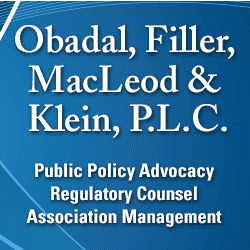New Cross-Reference Matrices for Compliance with U.S./UK MAG
ARSA’s new cross-reference matrices are available for U.S.-based repair stations looking to show compliance with the special conditions established under the bilateral agreement between the United States and the United Kingdom.
While the current transition periods allows for American maintenance providers to continue using an EASA dual release through 2024, the UK CAA has begun issuing approvals to FAA certificate holders (a number of ARSA members are already on the short list of approvals granted so far). The association’s tools will help repair stations, with or without existing UK approval, to assess their manual systems.
ARSA’s matrices are constructed exactly as those produced for compliance with the U.S./EU bilateral. For each special condition listed, users input the appropriate references to the RSQM, TPM, FM, form or related procedure or documentation in the Compliance Reference field. When an element does not apply, users explain the non-applicability so potential answers to inspector questions (and supportive reasoning) is readily apparent.
The matrices are available as part of ARSA’s free “tools for members.” To request your updated copy, which is delivered as a .zip file containing all “tools,” complete the order form at arsa.org/publications.
To see a brief overview of the current bilateral agreement between the United States and United Kingdom, members can review the “Legal Brief” in the October 2023 edition of the hotline.
Previous Brexit Updates...
12/8/22 - UK Certification 'Special Arrangement' to End in January
On Dec. 8, the FAA and UK CAA issued a joint statement confirming the January 2023 termination of the Special Arrangement for Continuity in Aircraft Certification Projects.
“The two-year transition period and this associated Special Arrangement will end on 01 January 2023,” the agencies said. “From that date, the provisions of the Special Arrangement will no longer be available, and all validation projects must follow the processes set out in the Implementation Procedures for Airworthiness established between the UK CAA and the FAA.”
To read the statement, click here.
To download the UK CAA/FAA IPA, click here.
Key Documents & Contacts |
|
Recording of and presentation from FAA Webinar on Nov. 15, 2023 For updated access to documents from the agencies, visit the FAA’s Dynamic Regulatory System (drs.faa.gov), select “Other Documents” and then “International Publications” from the left-hand menu. The UK CAA also publishes documents on its bilateral agreements page. Submit questions about the MIP/MAG to 9-awa-afs-intl-coordinator@faa.gov or call 858-999-7671. |
11/17/2022 - UK Approval Applications for U.S. Repair Stations Open in January
November 17, 2022
On Nov. 15, the FAA hosted a webinar on the Maintenance Implementation Procedures (MIP) and Maintenance Agreement Guidance (MAG) established between the United Kingdom (UK) and United States (US). The agency will begin accepting applications for UK approval of US-based repair stations on Jan. 1, 2023; approval must be held to perform work subject to British rules by the beginning of 2025.
During the webinar, FAA MIP Coordinator Paul Cloutier quickly reviewed the status of the new MIP and MAG. Cloutier explained the Special Conditions outlined in the MAG are “very similar” to those between the United States and European Union, with some “improvements” based on experience between the regulators. Once the new agreements take effect on Jan. 1, 2023, FSDOs will oversee applications by and surveillance of repair stations wishing to obtain UK certification. The MIP allows for a two-year transition period to provide the FAA time to process the expected influx of applications.
Repair stations holding EASA approval under the U.S.-EU bilateral agreement may continue performing work on UK aircraft and articles until Dec. 31, 2024. A UK Maintenance Organisation Approval will be required after New Year’s 2025.
After the overview, Cloutier was joined for Q&A by UK Head of Airworthiness Policy and Rulemaking Neil Williams (a regular participant in ARSA’s Annual Conference). The pair handled questions regarding certification, quality system integration, manual supplements, and maintenance releases. Of particular interest to ARSA members – and topics likely to recur in the association’s advocacy:
(1) The agencies have directed that repair stations cannot issue a so-called “triple release” on an FAA Form 8130-3 simultaneously showing compliance with FAA, EASA, and UK rules. When certificate/approval holders wish to authorize work for return to service under all three systems, they must issue separate dual releases: one under the UK-FAA bilateral and one under the EASA-US requirements. While an enterprising questioner confirmed these could be one document (e.g., printed on the front and back of a single piece of paper), the regulators insist upon duplicative paperwork.
(2) The Repair Station Manual Supplement required for UK approval must be separate from an EASA supplement. ARSA has long pushed to integrate manual content as closely as possible. Not only does such integration support regulatory compliance, it is a practical means to prevent human factors errors by technicians required to jump among and between various documents to find relevant procedures. Stay tuned for updates from the ARSA publications department.
(3) Applications must include a demonstration of need. Williams demurred when asked for specifics, citing interest against being overly proscriptive, but noted a customer letter or listing of orders would be sufficient.
(4) Sub-contractors need not hold CAA approval; they can be managed under existing repair station rules for contract maintenance in § 145.217.
(5) Similar to EASA requirements, the repair station must incorporate both product and procedural audits into its quality system. These audits can be performed together but must be clearly documented according to which elements are tested.
(6) Repair stations with upcoming renewals of their EASA approvals under the U.S.-EU bilateral should proceed on schedule with their European application to continue using that approval for work on UK aircraft and articles.
Repair stations seeking British approval may submit application to their local FSDOs using UK Form SRG 1783*. The fee associated with initial application is £900.
Reference Materials
To watch a recording of the Nov. 15 webinar, click here.
To download the PowerPoint presentation (with speaker notes), click here.
To download the MIP directly from ARSA’s servers, click here.
To download the FAA’s InFO directly from ARSA’s servers, click here.
For updated access to documents from the agencies, visit the FAA’s Dynamic Regulatory System (drs.faa.gov), select “Other Documents” and then “International Publications” from the left-hand menu. The UK CAA also publishes documents on its bilateral agreements page.
Submit questions about the MIP/MAG to 9-awa-afs-intl-coordinator@faa.gov or call 858-999-7671.
*Appropriately, the independence of the United States was codified when the Treaty of Paris was signed in September 1783.
To access ARSA’s information page on Brexit, click here.







